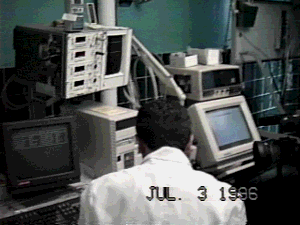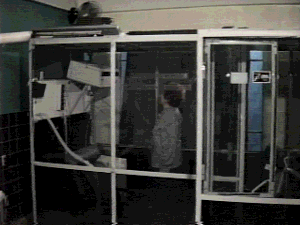

By Gustavo Zubieta Sr, MD and Gustavo Zubieta Jr, MD
HIGH ALTITUDE PATHOLOGY INSTITUTE (IPPA). La Paz, Bolivia
A glass chamber with a plastic covered wooden floor (2.75 m long, 1.45 m wide and 2.0 m high) was constructed in our laboratory in June 1992 (3510 m; barometric pressure = 494 mmHg), in which subjects can be comfortable for many hours while breathing different oxygen mixtures simulating different altitudes within the range of the earth's atmosphere. The side door has a lock (0.88 m long x 0.62 m wide and 2.0 m high), which enables the entrance or exit during operation, without significant variation of the oxygen concentration inside the chamber. Hence, arterial blood samples can be drawn, or any other medical assistance, can be granted. The temperature and humidity are kept constant by an air conditioning unit and heater. Carbon dioxide (CO2) can be removed by recirculating the internal air through a soda lime absorber. Oxygen (O2), nitrogen (N) and/or carbon dioxide (CO2) can be injected as required, in order to simulate different altitudes and gas tensions. Oxygen concentrations are monitored by an oxygen analyzer. A polyethylene tube 3 mm in diameter is also available to take air samples in order to measure inspired gas tensions, as a double check. Finger pulse oximetry is connected via serial port to a personal computer, for sampling every 5 seconds and averaging every 5 minutes. A one-way valve is connected by a mouthpiece to the outside, where a pneumotachograph, analogically connected to a computer records expiratory ventilation along with electrocardiogram. Douglas bags recollect the expired gas for CO2 and O2 analyses in a radiometer blood gas analyzer. All data is registered in a central computer for future analysis. Inside, a sitting down subject, can read, listen to a radio, watch television or talk on the phone. This multi-purpose chamber permits environmentally controlled studies and treatment of patients with acute and chronic hypoxia at high altitude in an accurate and homelike way.
@Copyright 1/24/96 IPPA - La Paz, Bolivia

